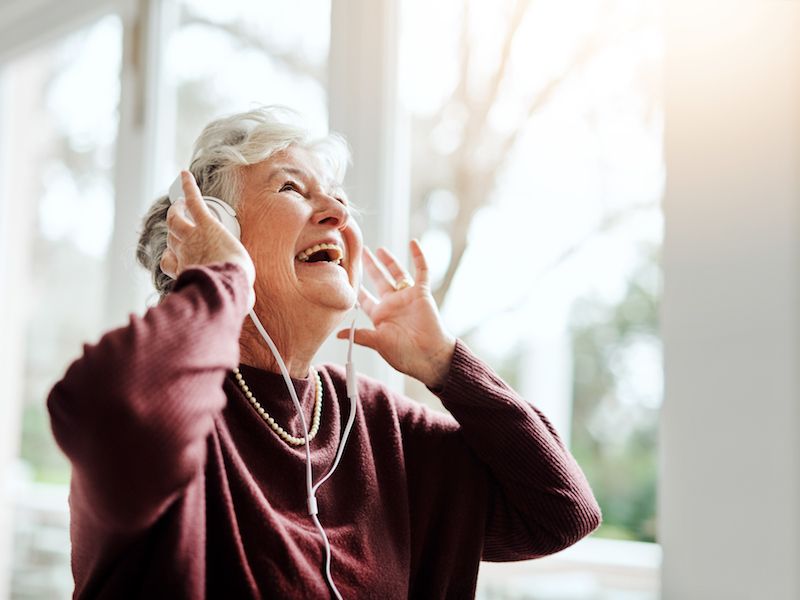
Noise-related hearing loss doesn’t only affect individuals who work in loud surroundings, such as construction workers or heavy metal roadies. It doesn’t even need to be work-related, recreation-related noise exposure can be dangerous, too. What type of exposure are we dealing with? Music, gaming, streaming video or anything else that you would listen to through headphones or earbuds.
You might not believe your smartphone or tablet can go that loud. The ordinary pain threshold for human hearing is roughly 150 db which is well within the range of these devices. Your ears will actually start to feel pain at this volume. So what’s the solution for safeguarding your ears against volume related damage.
The volume level here is important. A quick shorthand that’s widely suggested is the 60/60 rule: Listen with the volume at no more than 60% for no more than 60 minutes in a single session (because the length of sound exposure matters, too).
Your Hearing Aids Can be Set up For Music
Be sure, if you’re wearing hearing aids, you don’t try to drown out other noises by turning your streaming music up too loud. And there are more appropriate ways to listen to music so ask us about that also. Hearing aids aren’t made to increase the quality of music like they do with voices so if you’re really into music, you may have discovered this. While enjoying music, we can most likely make various adjustments to help enhance the sound quality and reduce the feedback.
What Are The Right Headphones For You?
When choosing headphones there are many options, especially if you use hearing aids. There are some things to consider, although it’s mostly a matter of personal preference.
Over-the-Ear Headphones
While the foam-covered speakers that was included with your old Walkman are basically no longer used, over-the-ear headphones have made a comeback. They have a lot of choices in color and style, are commonly endorsed by celebrities, and can be surprisingly pricey. And these headphones go over the entire ear blocking unwanted sound, unlike those old foam ones.
Main-stream perception is that these are safer than in-ear headphones because the source of the sound is further from your eardrum. But because the speakers are larger they are often capable of much louder volume. Noise cancellation can be a good thing as long as you’re not losing needed sounds such as an oncoming car. But on the positive side, you don’t have to compete with outside noise so you can enjoy your music at lower volumes.
Earbuds
The standard earbuds are widely recognized for inferior sound quality, even though many people still use them because hey, they came with the phone. Especially, with newer Apple devices, it’s simply easier to use the earbuds that came with the device because it probably doesn’t have a headphone jack.
Earbuds also don’t block out noise so the drawback is, you have a tendency to crank up the volume. Once again,, though it’s frequently said that earbuds are a problem because you put them in your ear so their speakers are very close to your eardrum, volume is really the biggest problem.
Noise Canceling Earbuds
Many people choose earbuds with a rounded, rubbery tip both because they’re more comfy than standard earbuds and more effective at blocking outside noises. A seal that blocks outside sound from getting in is formed by the rubber tip which molds to the shape of the ear. But these earbuds can also block out noises you might need to hear and loud volume is still the number one issue. Needless to say, these won’t work for you if you have hearing aids.
You might need to test out more than one pair before you find headphones that are what you are looking for. Your expectations, acoustically, will differ dependant on what kind of use you usually give them. The relevant thing is to find headphones that make it comfortable for you to listen at a safe sound level.
Don’t Cut Corners When Dealing With Your Hearing
Is it Safe, How Can I be Sure? If you use a smartphone, you can get an app for that, you can get the National Institute for Occupational Safety and Health’s free Sound Level Meter app. You can get other apps, but studies has discovered that the accuracy of these other apps is hit-and-miss (in addition, for unknown reasons, Android-based apps have been shown to be less precise). That prompted NIOSH to create their own app. The app allows you to measure outside noises, but sounds coming from your device’s speakers can also be measured, so you will know exactly how much volume your ears are getting. It’s a little bit of work, but taking these kinds of protective measures can help protect your ears.